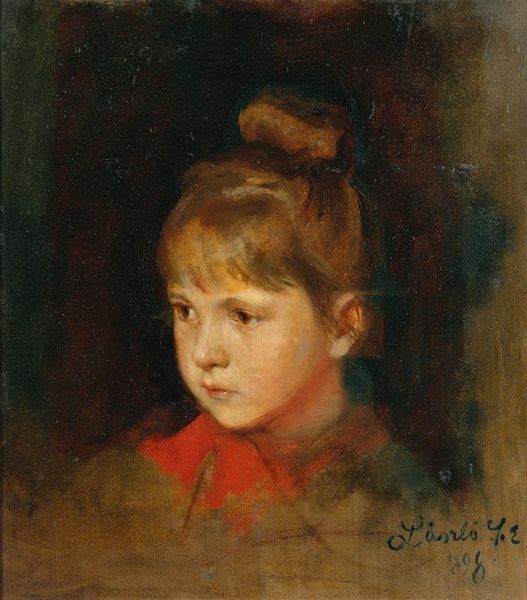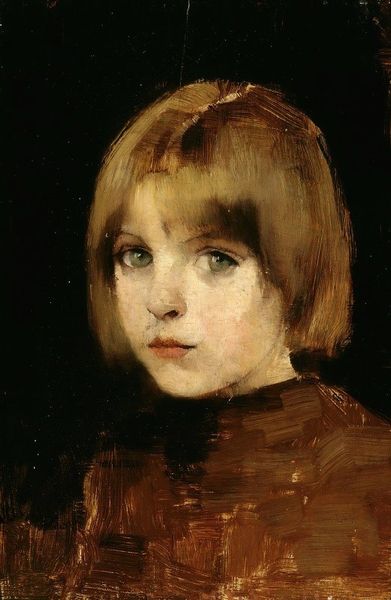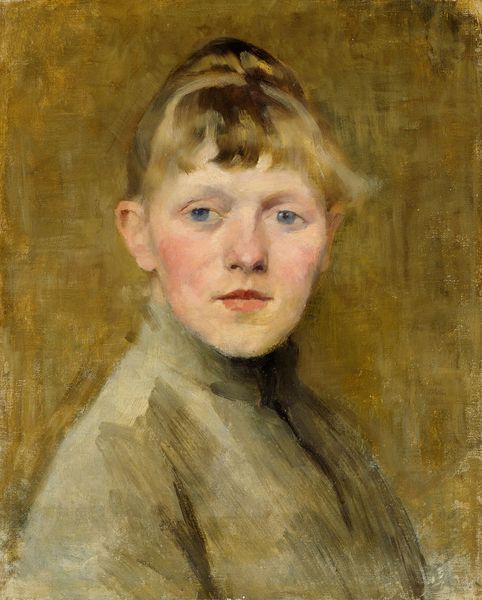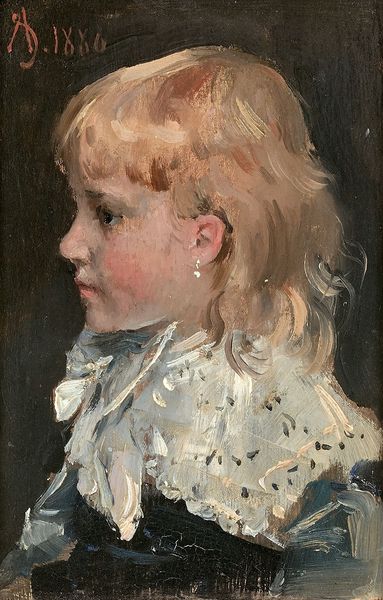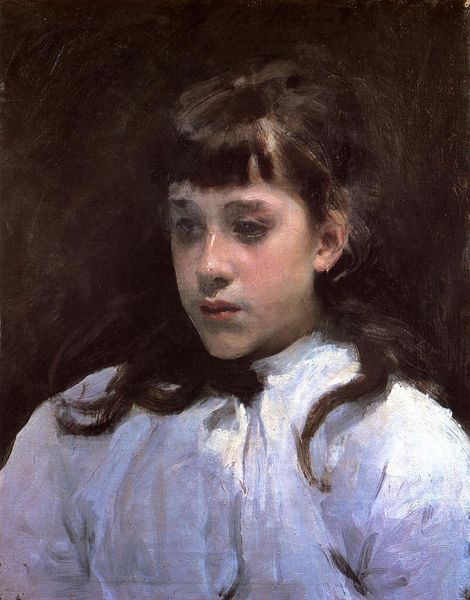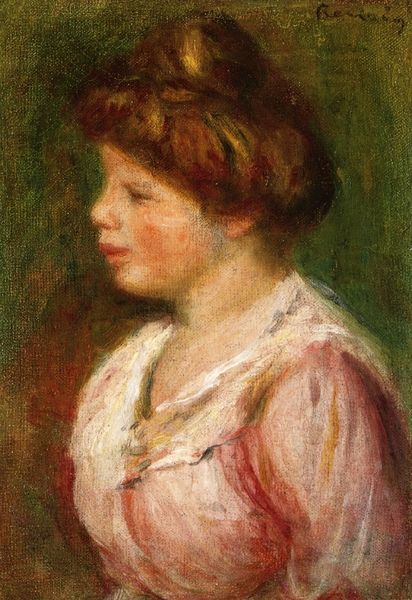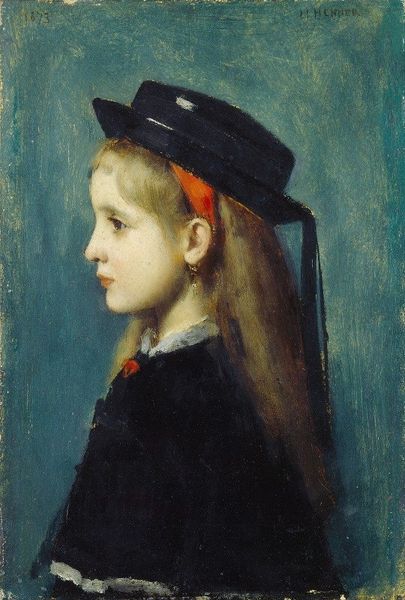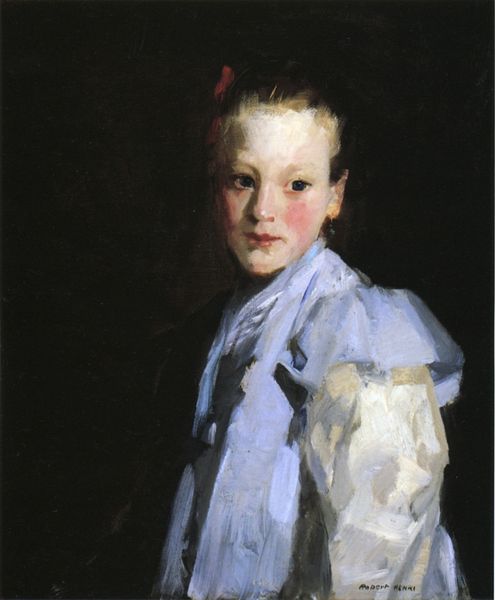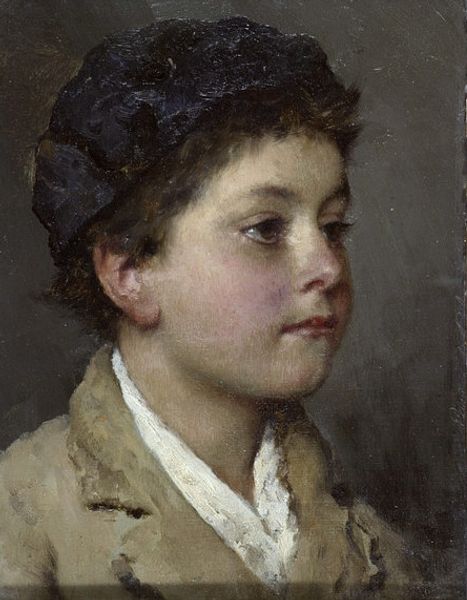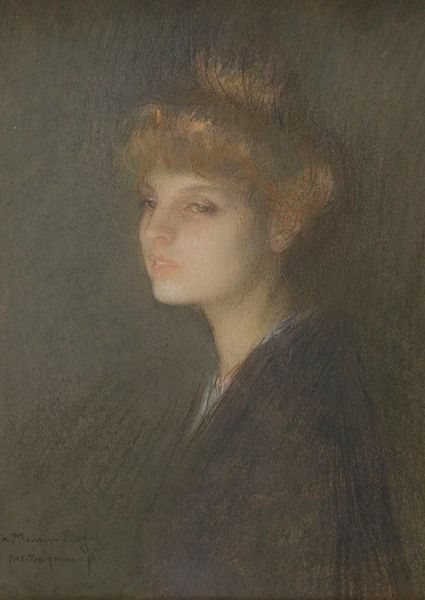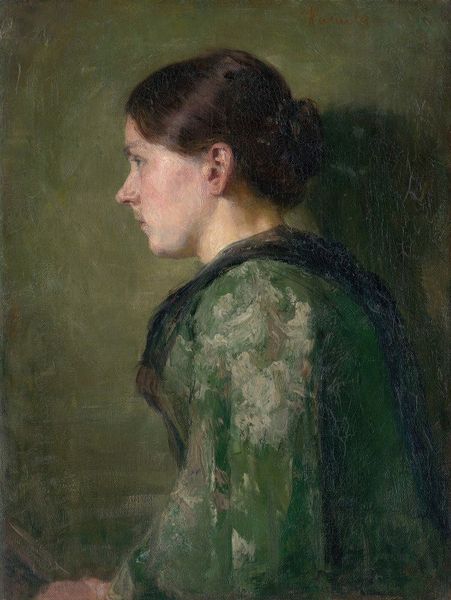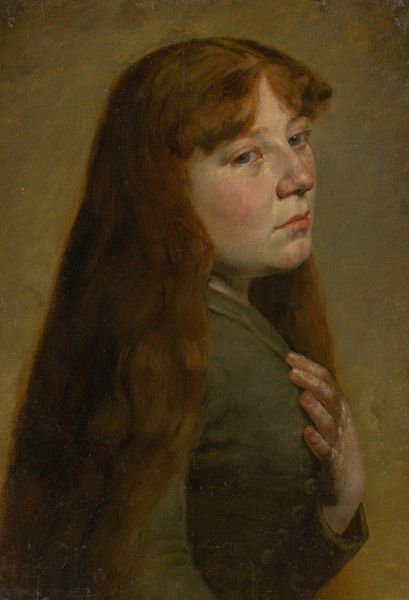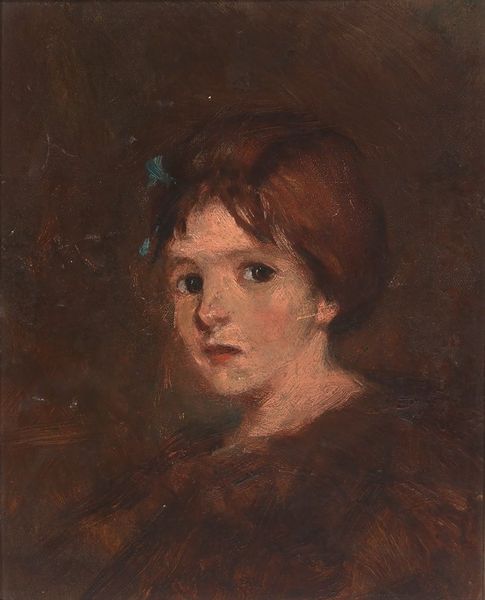
oil-paint, impasto
#
portrait
#
figurative
#
oil-paint
#
oil painting
#
impasto
#
realism
Copyright: Public Domain: Artvee
Editor: Here we have Frank Duveneck’s oil painting, “Portrait of a Lady.” It looks unfinished in some parts, yet the woman’s face is rendered with great detail. What stands out to you about the work's composition and technique? Curator: Immediately striking is the contrast. A limited palette focuses our gaze entirely on the sitter's profile. The tenebrism—that stark contrast between light and dark—isn't merely dramatic; it's structural. Notice how the shadows sculpt the form, particularly along the jawline and beneath the brow. It gives a psychological depth. Editor: It’s interesting that you point that out, psychological depth. Are you referring to the emotional intensity created through impasto application of pigment? Curator: Precisely. It’s through close examination of Duveneck’s application of impasto, especially around the face and hair, that one can begin to appreciate Duveneck's command of painterly techniques and moreover begin to understand why and how those compositional choices affect your emotional response. Can you begin to explain those emotional responses? Editor: It's intriguing to consider that technical elements can be connected to psychological factors and the viewers interpretation. I had not considered it from a Formalist viewpoint. Curator: Indeed. The material rendering, the formal structure; they are inextricably linked to create an intellectualized and sensory whole. Editor: So, appreciating this portrait goes beyond just admiring the subject. We need to examine and deconstruct how Duveneck created this experience with light, brushstroke and form.
Comments
No comments
Be the first to comment and join the conversation on the ultimate creative platform.
